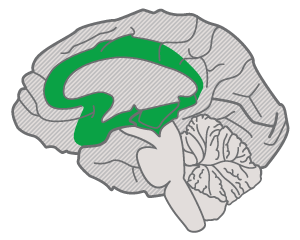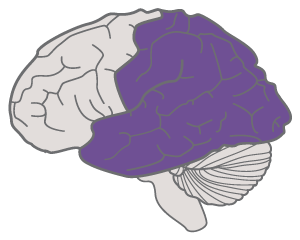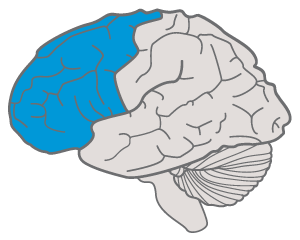- Center for Innovative Teaching and Learning
- Resources
- Toolkits
- Scaffolded Support
- Week Five - Incorporating Universal Design for Learning

Week Five
Incorporating Universal Design for Learning
Our students are diverse, and they have individualized learning needs. It would be impossible to address those individually, which is why we introduce Universal Design for Learning (UDL). The UDL framework combined with what you have learned about your students, like their areas of interest or challenges that they experience when learning complex concepts in your field, helps you to design effective teaching and learning experiences that are flexible to support the needs of all learners.
The CAST Organization has curated an extensive library of research and evidence-based applications of UDL principles for teaching and learning. UDL is guided by “the most widely replicated finding in educational research: learners are highly variable in their response to instruction. In virtually every report of research on instruction or intervention, individual differences are not only evident in the results; they are prominent” (cast.org). Rather than treat the individual differences as annoyances or distractions, UDL considers differences a key factor to address when designing effective instruction.
Resources
The UDL framework includes three areas of focus: engagement, representation, action and expression. The three areas should be addressed when designing and teaching every course. Providing multiple approaches that address the “why,” “what,” and “how” of learning will build a strong course that meets the diverse needs of individual students.

Engagement: The "Why" of Learning
Effective instruction requires intentional effort to gain interest and engage the cognition of students. “Information that is not attended to...is in fact inaccessible…because relevant information goes unnoticed and unprocessed” (cast.org). Using a variety of methods to attract learners’ interest and stimulate cognition addresses the “why” of learning.

Representation: The "What" of Learning
Presenting course content in multiple formats improves the way students perceive and understand information. No single approach to presenting content to learners addresses all students’ needs. Consequently, using several methods to share content is critical for supporting the needs of all learners.

Action & Expression: The "How" of Learning
Students use a variety of approaches to navigate and share their knowledge in the classroom. Offering options for ways that students can navigate the classroom and demonstrate their understanding of content is critical to support the success of all students in the classroom.
Recommended Strategies
Choose one of the following strategies to implement
Focus on Relevance and Value
Optimize relevance, value, and authenticity by varying activities and sources of information to connect with students’ lives. Include culturally and socially relevant and responsive material appropriate for diverse racial, cultural, ethnic, and gender groups.
Video Captions Are for Everyone
Video captions are essential for students with disabilities, but they are beneficial to all students. In the classroom, captions have been found to increase student understanding of video content (Jae, 2019). For online materials, students use captions to help them focus, increase comprehension, increase retention, and when their learning environment requires them to reduce or mute the volume (Linder, 2016). Try enabling captions the next time you show a video in your classroom (if in person). If your video doesn’t have captions, you can use Kaltura’s automated captions and edit any inaccuracies for a quicker method than transcribing.Enable Live Captions
If you are using PowerPoint in the classroom, and your classroom has technology for streaming (i.e., has an integrated microphone, webcam, J5 360 camera, or a Meeting Owl), you can enable live captions in PowerPoint. For web conferencing, try enabling automatic captioning in Zoom or encourage students to use the automatic transcription in Teams. While automatic captions will include errors and are not sufficient for a student who has a disability, they may be helpful for other students. The Disability Resource Center will provide appropriate accommodations for students with disabilities.
Provide Students with Choice
When possible, provide students with some flexibility and choice for how they demonstrate what they have learned. For example, instead of a written paper or a PowerPoint presentation, allow students to select the format and media they would prefer, such as text, speech, drawing, illustrations, comics, storyboards, film, music, podcasts, websites, social media, etc. Clearly, there are times when the learning objectives necessitate a specific format (such as in a writing-intensive course, or one that focuses on creating the types of documents used in the field), but providing choice when you can do so will allow students to use a format best suited to their skills and interest.
Promote the Use of Alternative Formats
One of the common practices in support of UDL is to use multiple formats for materials, including text, visualizations, videos, audio, and multimedia formats that combine all of the above. You can also promote the use of Ally Alternative Formats for students. This allows students to access text-based information in formats that better meet their needs, such as audio, HTML or ePub (great for mobile views). Alternative Formats also include tools that support deeper and more productive reading, including the BeeLine Reader and Microsoft Immersive Reader. Feel free to adapt any of the statements in our Communication Toolkit to introduce Ally Alternative Formats to your students.
Selected Additional Resources
There are so many resources on Universal Design for Learning that we wanted to share – here are some additional resources for further reading, if this is a topic that interests you!
- Universal Design in Learning – This resource on the NIU Center for Innovative Teaching site includes recommendations for designing classes and creating accessible course materials that include all students.
- University of Washington DO-IT Center for Universal Design in Education – This article from the Center for Universal Design in Education develops and includes resources to help educators apply universal design to make all aspects of the educational experience welcoming to, usable by, and inclusive of everyone, including people with disabilities.
- Creating Inclusive Learning Opportunities in Higher Education: A Universal Design Toolkit – This book offered through Harvard Education Press includes a step-by-step guide for putting the UDL principles into action to create barrier-free learning environments.
Next Steps
Please review the resources and select at least one of the recommended strategies to implement. Make a note to yourself about the strategy you used and the impact that it had.
Next week, we will share resources on Connecting Students with Institutional Support Resources. If you have any questions or concerns in the meantime, feel free to let us know at citl@niu.edu.
 Licensed under a Creative Commons Attribution-NonCommercial-ShareAlike 4.0 International License with the exception of any images, unless specifically noted.
Licensed under a Creative Commons Attribution-NonCommercial-ShareAlike 4.0 International License with the exception of any images, unless specifically noted.
-
Scaffolded Support for Teaching Gateway Courses
-
Creating a Student-Centered Syllabus
-
Starting Strong in the First Week of the Semester
-
Creating (and Sustaining) a Sense of Belonging, Connectedness, and Community
-
Supporting the Disappearing Student
-
Incorporating Universal Design for Learning
-
Connecting Students with Institutional Support Resources
-
Providing Effective Feedback
-
Collecting Mid-semester Feedback
-
Re-energizing Yourself and Your Students
-
Increasing Course Evaluation Response Rates
-
Finishing the Semester on a High Note
-
Bibliography
-
Creating a Student-Centered Syllabus
Contact Us
Center for InnovativeTeaching and Learning
Phone: 815-753-0595
Email: citl@niu.edu
Connect with us on
Facebook page Twitter page YouTube page Instagram page LinkedIn page